Whats new in Bridge 7?
Bridge 7 is out! Next to new applications like API-Management and new features like OData Support, the Bridge comes in a revised design. Find below a summary of all new features and operational and technical improvements.
To use BRIDGE 7, you need a new BRIDGE license - please contact us at info@e2ebridge.com for more information. Our Bridge 7 Migration Guide will help you with the task of updating your systems, then.
Main Features
API Management
Bridge 7 comes with Scheer PAS API Management. API Management offers a maximum of control regarding administration and optimization of your APIs. You can setup different permission levels for usage and administration of APIs, services and clients, and control the publishing of contracts in real-time in a flexible way. Access to the interfaces is possible either via (immutable) contracts or via use of public APIs.
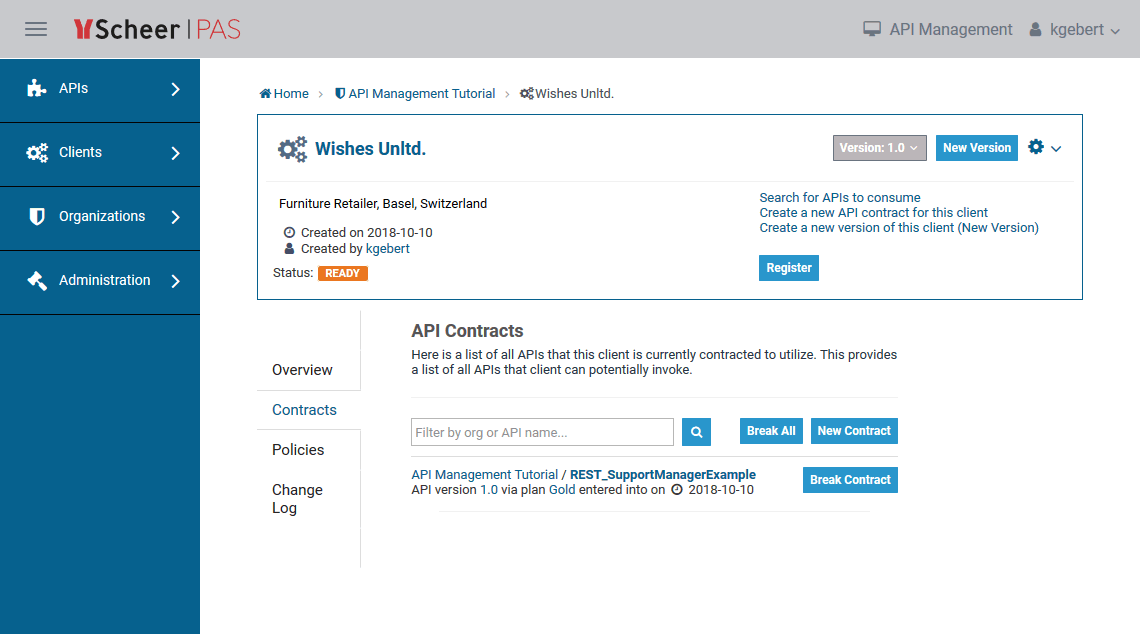 | The API Management solution has three components which can be deployed on different host to get maximum performance and stability:
API Management is based on apiman and Keycloak. For more information, refer to the API Management documentation. |
Process Mining
The Process Dashboards have been completely redesigned. The new Scheer PAS Process Mining allows for intuitive and easy creation of new analyses and comes with significant performance improvements.
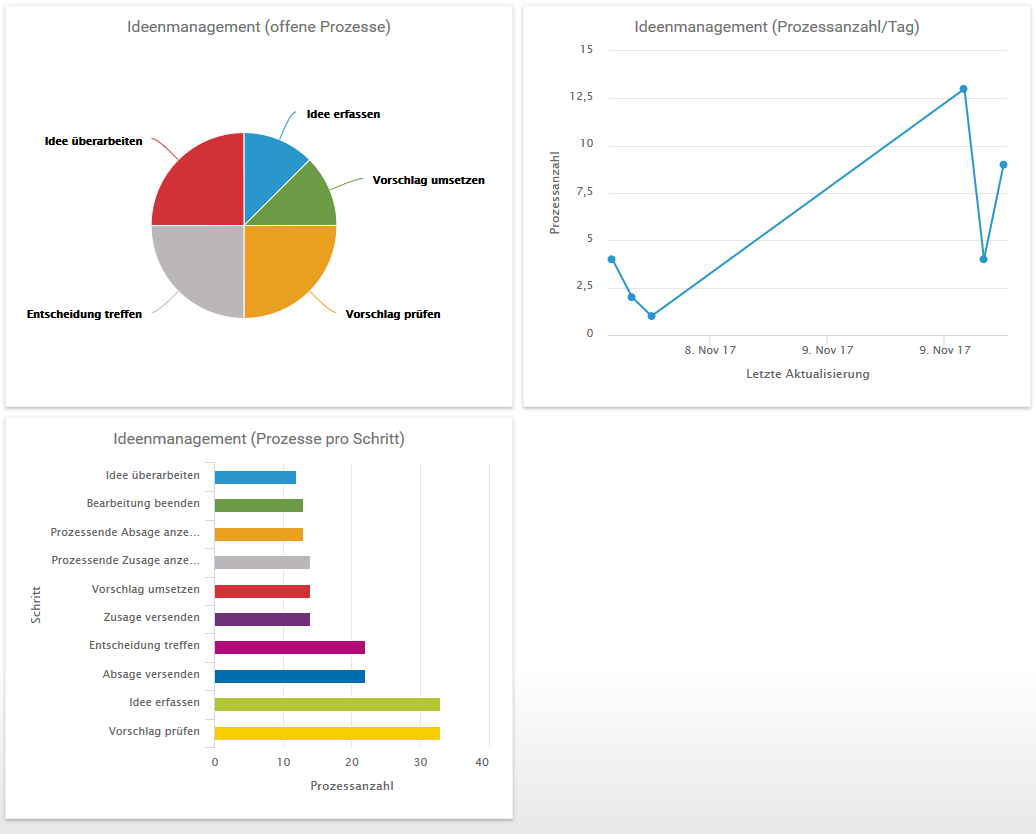 | Process Mining comes with a personalized dashboard view. Manage all your analyses on one page!
|
 | Create your diagrams to your needs.
|
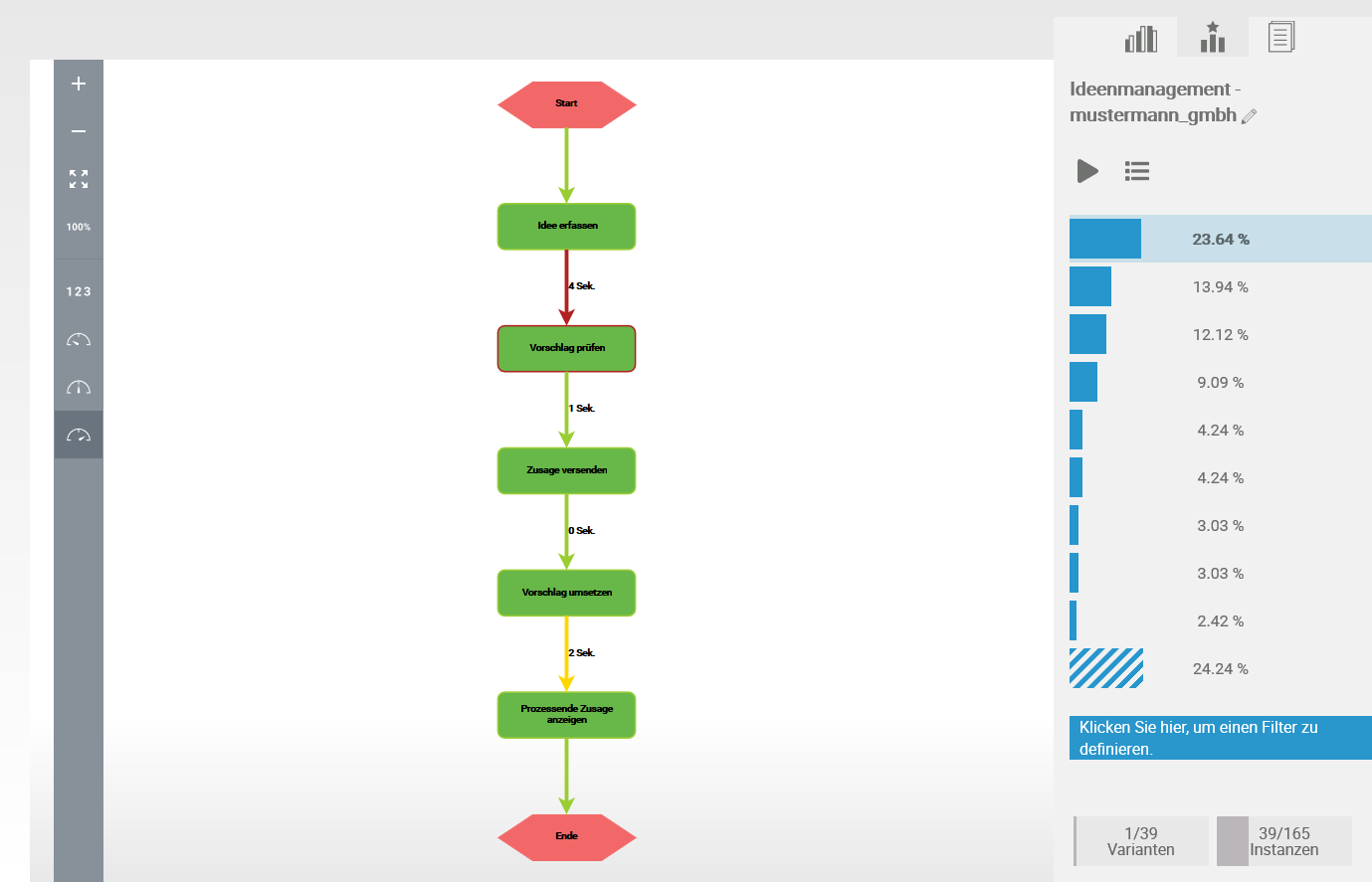 | Analyze process variants and their frequency with the Process Explorer to get a deeper insight to your business processes and find potential for optimization.
|
For more information, please refer to the official Process Mining documentation.
New Adapters
EDI
The EDI Adapter now also supports OFTP2 and AS2 formats:
OFTP 2 is a specification for the secure transfer of business documents over the Internet.
AS2 is a specification about how to transport data (like Edifact documents) securely and reliably over the Internet.
The feature includes pre-built service templates including a user interface for configuration of transport channels and communication partners.
OData Support
The Bridge now supports OData for querying and updating databases using REST. The protocol allows Web clients to get, publish and edit database resources using simple HTTP messages. Using OData, you can easily integrate with SAP NetWeaver Gateway, Microsoft Dynamics NAV, Microsoft Office 365, Microsoft Sharepoint and more.
For more information on the OData Adapter, please refer to OData Adapter and Importing OData Entities and Services.
Alias Reader
The Alias Reader enables you to get the details that have been specified on any alias from the component diagram. You can now get the alias details with an action node with stereotype <<AliasReader>>. This adapter replaces the deployment macros get...FromAlias().
For more information on the Alias Reader, please refer to Alias Reader.
Persistent State Control Adapter
The Persistent State Control Adapter gives access to persistent state metadata directly from within a service (self context). With this adapter, you can:
list all persistent state owners
get the name of an owner
list all available persistent state classes
get an object count per persistent state class
get the persistent state metadata
query persistent state objects
delete persistent state objects
The query functionality in particular is powerful and allows for very complex queries.
See Retrieving Persistent State Metadata with the PersistentStateControl Adapter for more details.
Improved Adapters
Persistent State Adapter: Performance Improvements With External Persistent State Attributes
You can mark attributes of a persistent state class as external by applying stereotype <<External>>. This can speed-up persistent state performance if you have huge data objects (like e.g. big blobs, IDocs or PDFs) that are only used in few transitions.
External persistent data is handled differently compared to the internal data:
External persistent data will be stored separately. You can even store external data to a different database (see Persistent State Components).
External persistent data will only be loaded on demand.
External persistent data will only be saved if loaded before.
For more information, refer to Persistent State Classes and Handling Persistent State Objects With the Persistent State Adapter.
xUML RUNTIME API
As of Bridge 7.5.0, the xUML Runtime provides a REST interface to the controller service of each xUML service. Initially, you can access persistent state resources via this API, but we plan to add more service related resources.
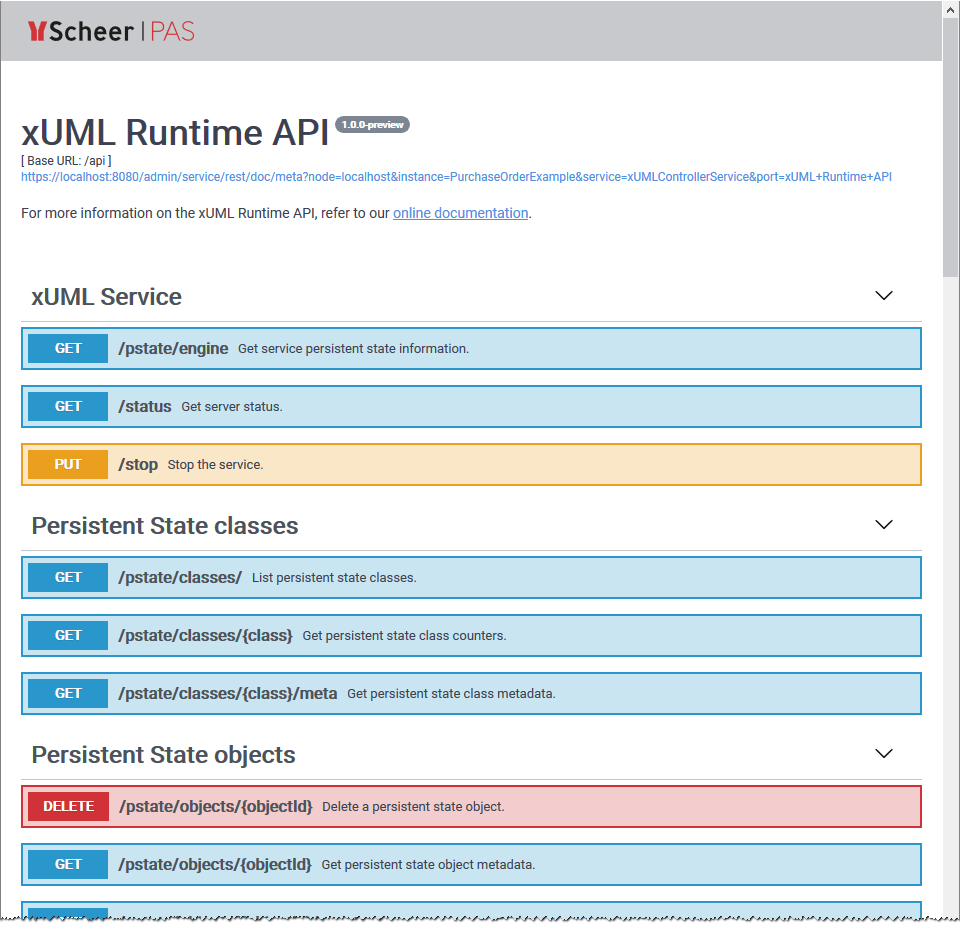 | Bridges as of Bridge 7.5.0 provide an OpenAPI 2.0 Specification of the controller service for documentation and testing purposes. Via a link on the xUML service page, you can access a REST service documentation page where you can inspect the service interface and make HTTP calls on the service. |
Continuous Delivery with the Bridge
Based on a straightforward and repeatable process, the continuous delivery approach helps with building, testing and releasing software faster. You can automate your build, deploy, and testing processes using an automation tool together with the Bridge command line tools.
For more information, please refer to Continuous Delivery with the BRIDGE.For automation purposes, all Bridge functions can be accessed via a REST interface.
For more information, please refer to BRIDGE API.The Bridge Command Line Interface has been reworked and now offers many new features. You now can access most of the actions of the Bridge API via the CLI.
viewing and setting the service preferences and the service settings of xUML, Node.js and Java services
advanced handling of xUML services (list services, view status, view/change service documentation, list/cancel running sessions, download repository)
resource handling (list, upload, delete)
listing global variables
Refer to GitHub for more information.
Operational Improvements
Operating System Support
The following operating systems now are supported officially as a system to run the Bridge on:
Windows Server 2016
Windows Server 2019
New Bridge Design
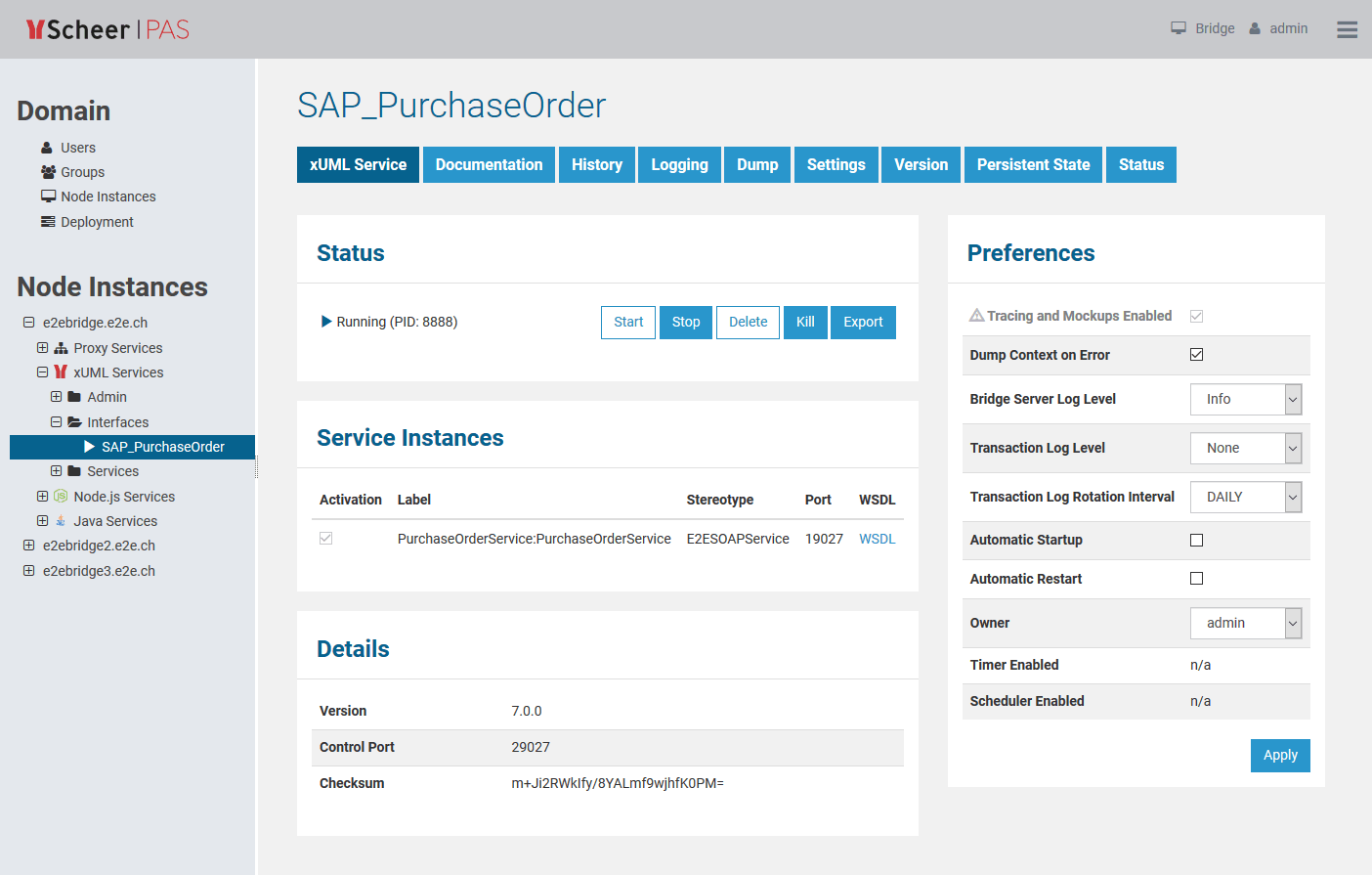 | We have redesigned the user interface of the Bridge to give you a smoother user experience. |
Improved Search in Log Files
 | We have refurbished the Logging tab in the user interface of the Bridge. You now can use regular expression to search the logs and even search throughout all existing logfiles of the service. For more information, please refer to https://doc.scheer-pas.com/bridge/?contextKey=logging-of-xuml-services&version=latest. |
Configurable Service Port Numbers
 | Front-end service port numbers now are configurable on the Bridge. |
Service Version and Improved BRIDGE Deployment
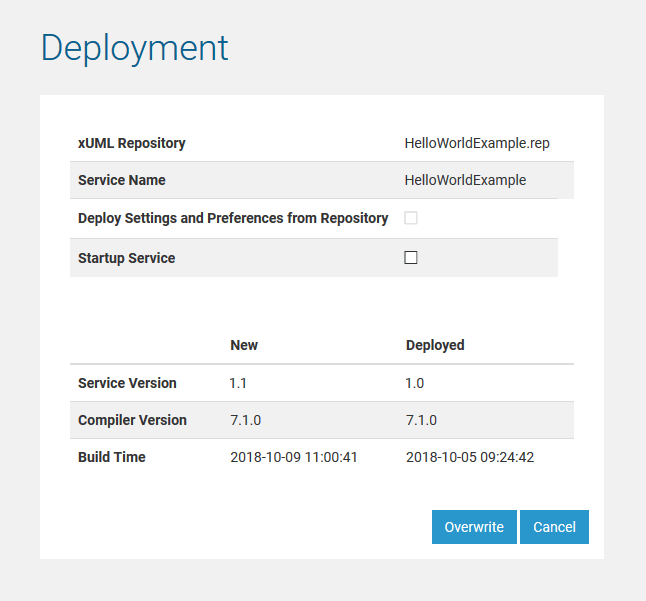 | You now can specify a service version in the component diagram, similar to the library version number (see Creating a Component Diagram). The service version will be visible on the Bridge in several places, e.g. on the improved Version tab (see Additional xUML Service Tabs). The deployment dialog now shows a table with service details, e.g. the new service version (see https://doc.scheer-pas.com/bridge/?contextKey=deployment-of-xuml-services&version=latest). Additionally, if the service to be deployed is already existent, you can now compare the service details of the new and the deployed service. This helps you to better decide, if you are deploying the correct repository. |
Technical Changes
We updated some underlying software to newer versions:
Node.js updated to version 12
Java updated to version 11
proxy updated to Apache httpd version 2.4
TLS 1.3 supported
Tomcat updated to version 9
New Features for Developers
Lots of new features, improvements and bug fixes for BUILDER, ANALYZER and Bridge help developers to create better services:
Extended Bridge API: delete service, export xUML service, deploy service, get/put global setting variables, get/delete service sessions, kill service, managing users and groups (see https://doc.scheer-pas.com/bridge/?contextKey=bridge-api&version=latest)
REST, HTTP and SOAP services support IPv6
REST Adapter supports media type parameters
SQL Adapter requests can be cancelled (see Additional xUML Service Tabs)
Improved BPMN root state machine with more complex error and retry handling (see The Model Implementing the BPMN Process and BPMN Default Error Handling)

File System Adapter and Flat File Adapter allow for setting a static root path together with a dynamic file name (see File System Components)
Analyzer allows to start a test suite via command line (see Running Regression Tests From Command Line )
Possibility to implement a shutdown activity for Node.js and Java services (see Developing Node.js Services and Java Services Reference Guide)
Improved deployment view on the Bridge: service details displayed (see https://doc.scheer-pas.com/bridge/?contextKey=deployment-of-xuml-services&version=latest)
Related Content
Related Pages:
